What do you do when you start a blog?
Most people jump right in. They choose a theme, browse around for awesome plugins, set up Mailchimp and do all this other… stuff, before they sit down and think it through.
I’ve learned that when you do this, it’s easy to end up with a really pretty blog….with very few readers.
When I joined Canva a couple months ago,instead of writing a word or improving the blog’s design, I spent the first month simply building a strategy.
Today I want to tell you about the results, and how you can duplicate the process if you like.
A look at the Canva blog – before and after
Canva’s blog, Design School, was already massively successful when I joined the team. In the first 60 days since launch, Design School had achieved a total of 269,714 sessions.
It was founded as a place where anyone could come to learn about design, with interesting articles, an interactive tutorial series and an education portal.
In this case, I skipped a step many new blogs will need to take: figuring out how your blog aligns with the overall vision of your company. Canva is a free graphic design platform that empowers people of all skill-levels to be able to design, so the theme of the blog was right on track.
My main goal was to figure out a way to grow this vision. How could we spread our free resource into the hands of millions? As we found out, all we needed was a tweak in the strategy.
What you can see below is the impact of that tweak. This graph, taken from Google Analytics, is a comparison in traffic between November to January (the old strategy – orange line) and January to March (the new strategy – blue line).
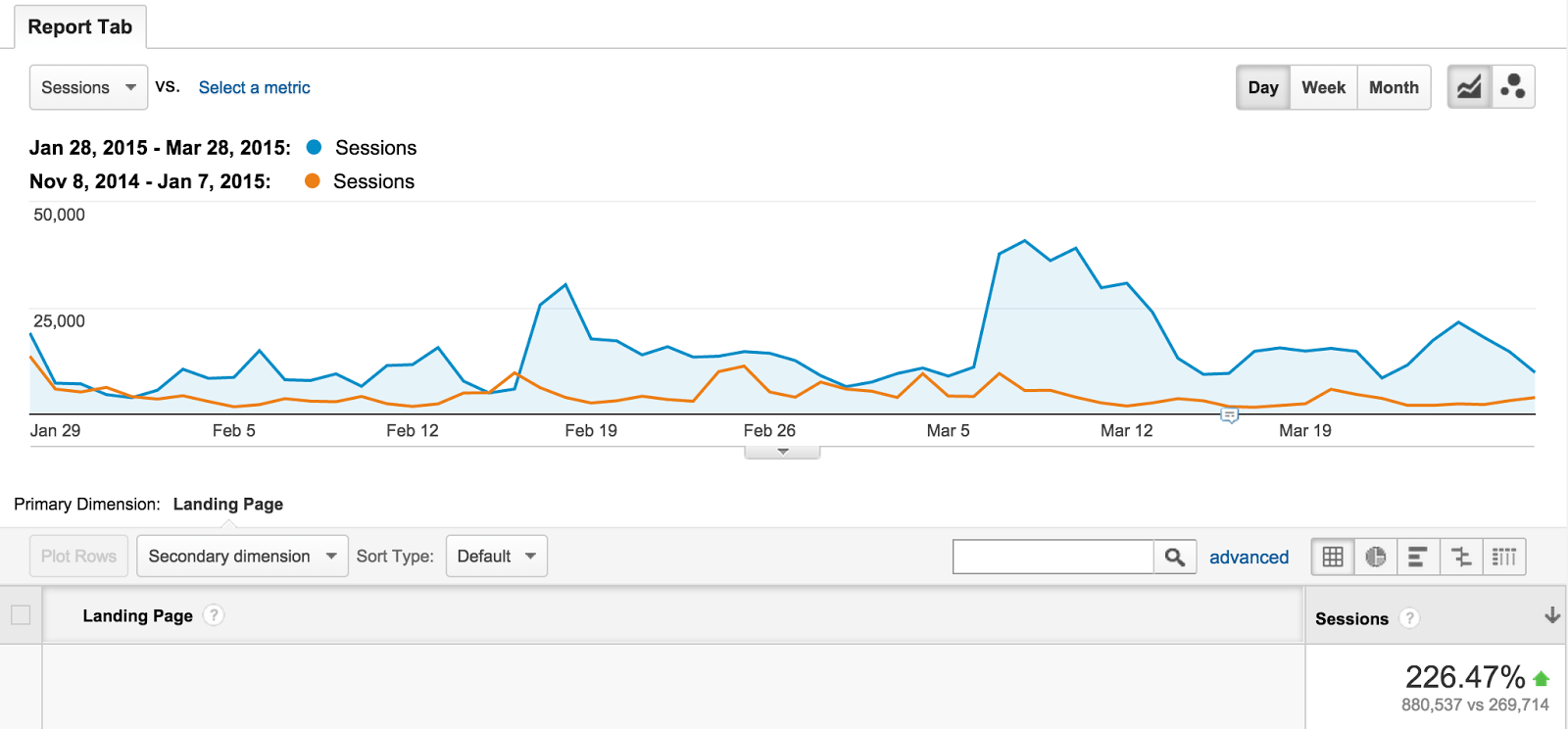
There’s one article that went viral, but Design School’s traffic is also consistently higher than it used to be.
No, we didn’t massively increase the number of fans we have on any social network. We didn’t do a major push of our content or sponsor our posts. The only thing we changed was the way we approached our content. Here’s how we did it.
1. Research your industry landscape
The first step is to discover the other online publications that dominate the editorial design space. If you’re running a blog on behalf of a company that provides a service or product, you might also need to establish your blog competitors.
What type of content is is getting shared?
A few tools can help here. First, plug in a competitor’s URL to BuzzSumo and look at the type of content that does well for them on social media. Here’s a screenshot of Design School’s top content:
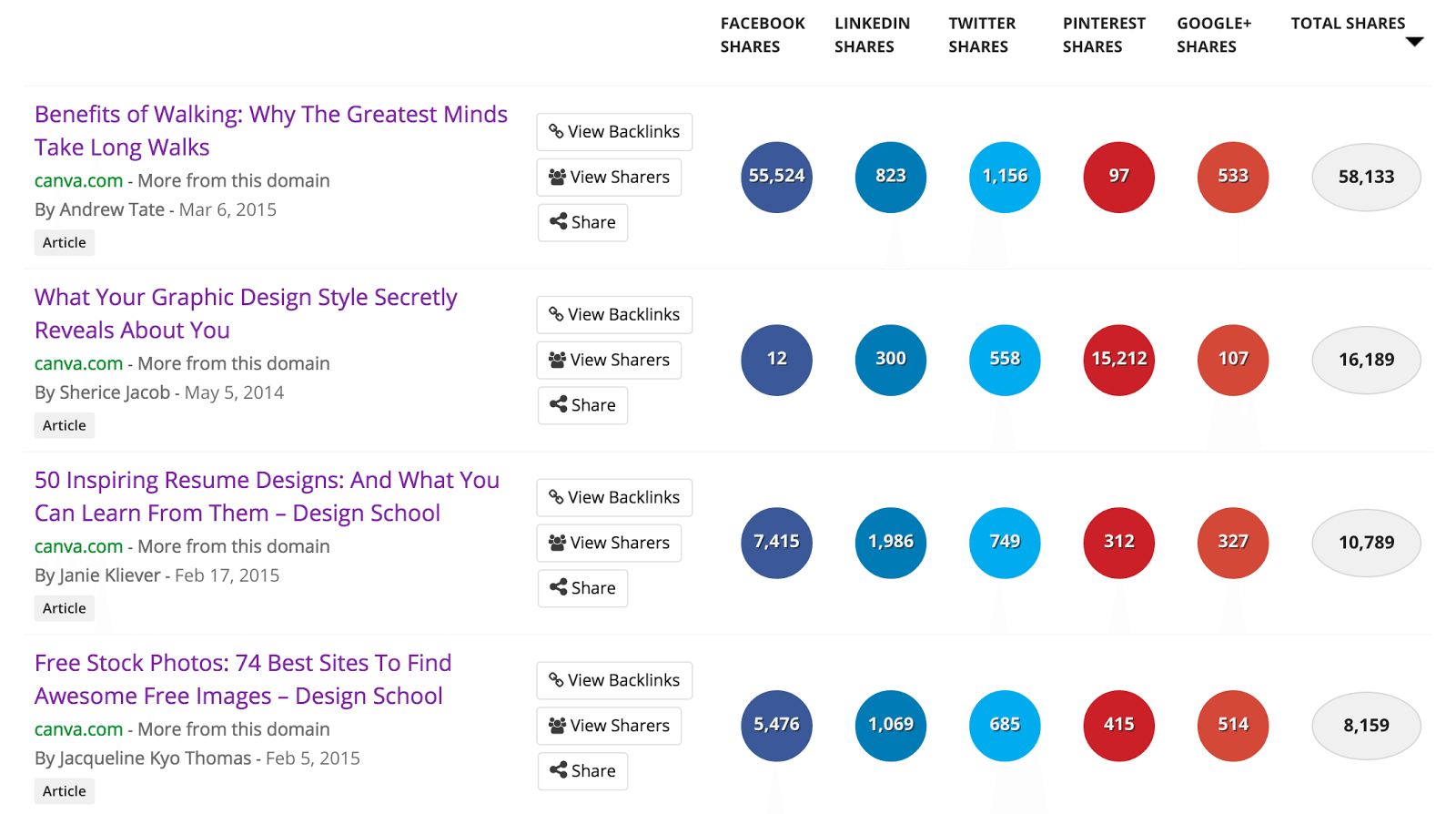
Next, go to Topsy and search for your main keywords. The search results for particular keywords will be a little different than BuzzSumo’s, and Topsy also goes back further than Buzzsumo to return results for content older than a year. By searching both, you’ll be gaining a much more thorough idea of how your competitors are working.
Here’s what I get when I search Topsy for “typography”:
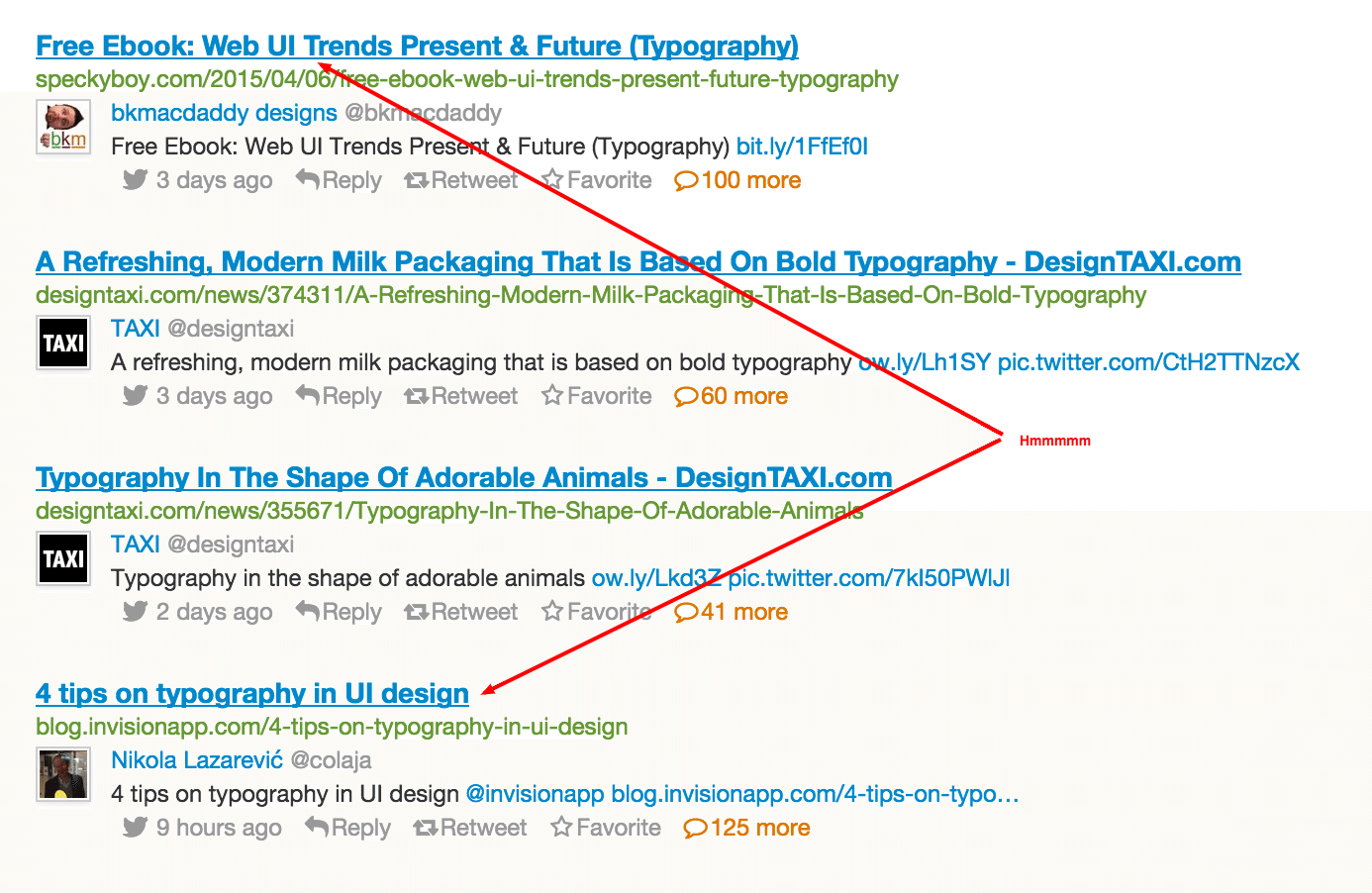
What type of content is getting Pinned?
Next, get an idea of which type of posts in your field get the most pins. This can be a good strategy even for people who don’t work in creative or highly visual fields.
Go to Pinterest and search various popular keywords in your industry. Here’s a search for “graphic design:”
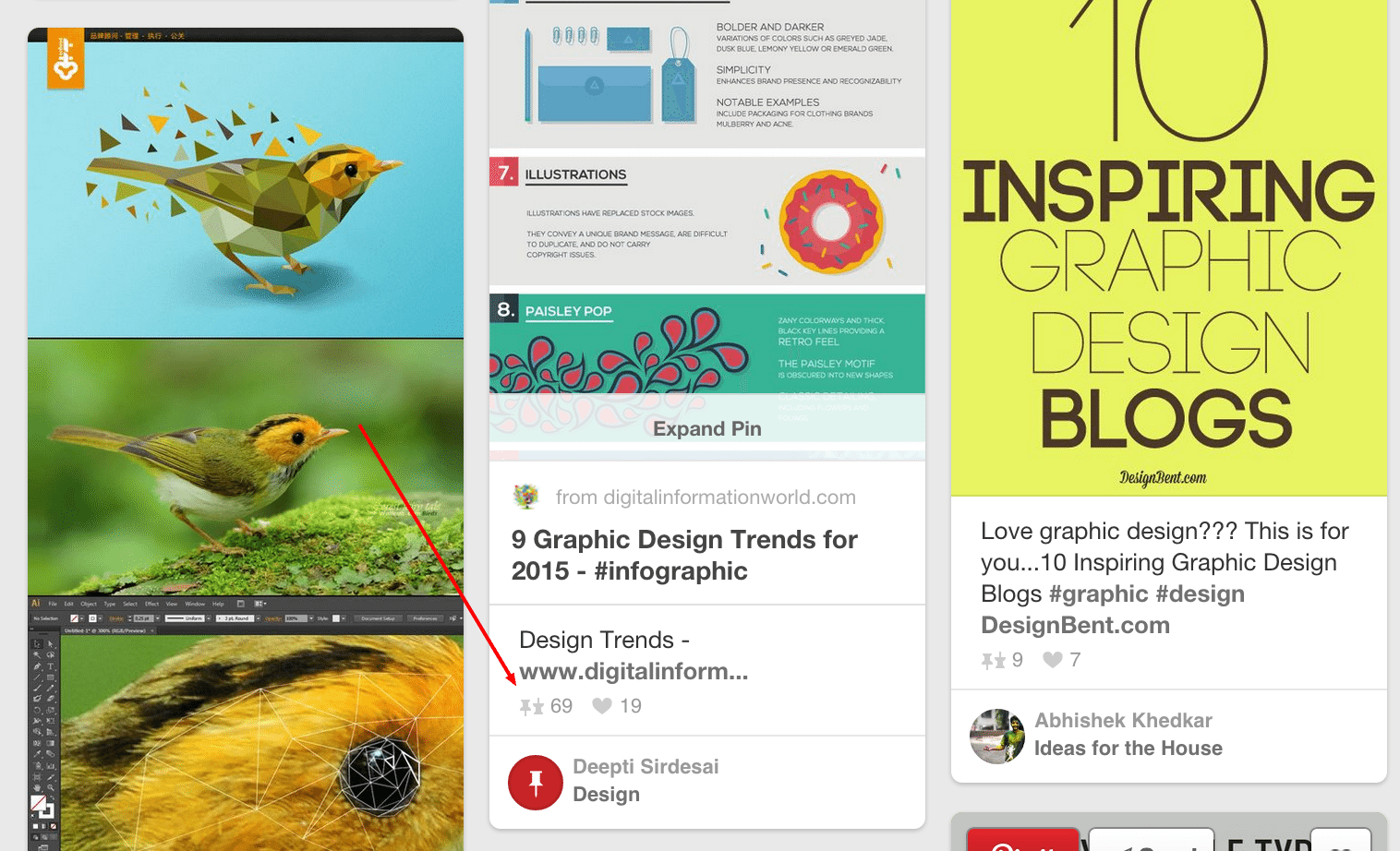
What are others ranking for and getting links for?
We also wanted to know where our competitors get all of their traffic from—social is just one small part.
To find out more, we used SEMRush to look at what our competitors were ranking well at in terms of SEO.
Doing this search will inform you which of your competitor’s articles get the most SEO traffic. For example, these are our top ranking SEO search terms for designschool.canva.com.

We also use Ahrefs to look at how many websites talk about our competitor’s articles. Think of these websites as new friends – potential awesome partners that might like to share your content in the future.
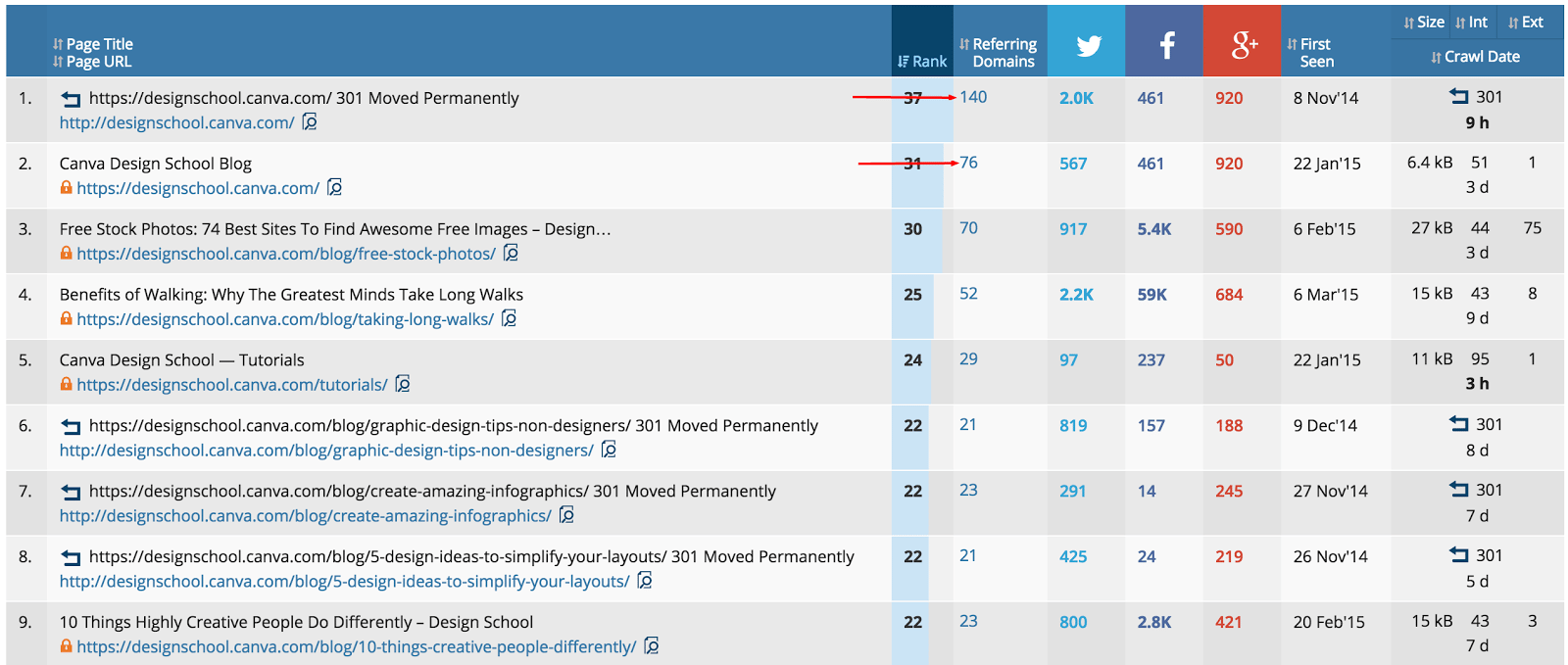
Repeat this process for as many competitors as you can find. This is your starting point.
Step 2: Study up on your audience
The content your competitors publish is just element. You want to find things your competitors haven’t done yet.
This is called the market gap.
Peep Laja, for example, identified a gap in the market for data-driven CRO advice. So when he started ConversionXL, that became his focus. Upworthy identified a market gap for a viral site that focuses on important issues instead of cats.
To identify a market gap, first you need to study the market. In Step 1, you find out what’s already out there. In Step 2, you find out what people actually want.
Q&A sites like Quora are a great window into your audience. Use them to find the questions people in your industry ask.
Then look at two things: the number of people who want answers and the number of upvotes the most popular answer gets. What did the most popular answer contain to make it so popular?

Who are these people? Are they moms? Are they students? Business owners? Write down the different types of audiences you identify here.
Next, determine how large these distinct groups are. In the design industry, there is a massive amount of blogs dedicated specifically to freelance designers, and most design blogs are written for, well, designers.
Where do these people hang out online? If you want to target startups, Hacker News is the place to be. In the design world, Designer News. GrowthHackers and Inbound are popular amongst marketers. And of course Reddit, LinkedIn and the like are also great places to research.
In each of these communities, ask yourself:
- What posts get the most upvotes? What types of posts are shared on here? A list post might do well in social, but it probably won’t make it on Hacker News.
- What are some of the most popular comments (as voted by the community)? That tells you the values of the community (for example, posting anything with a conservative political view on Reddit is a recipe for disaster).
- What are sites are shared on these communities? Are there any site that consistently show up in the top list? If so, what do these sites write about?
Who are the movers and shakers? What do they talk about?
- Influencers are individuals with a large following – people who have the respect of their industry. Find these people and follow their conversations.
- Which websites’ content do these people share? Can you guest post on sites your audience is likely to read?
- What does the content they share have in common? Are they interviews/case studies? Do they contain a lot of images? How are they structured?
What are the general trends in the market?
- Mobile apps didn’t exist a few years ago but today they’re one of the most talked about topics. A blog that focuses on mobile – and there are quite a few of them now – has a better chance of succeeding than a blog that focuses on say, infomercials, which have been declining as an industry for decades.
- Certain skills can be applied to many channels, but do you have a focus? And if so, are you focusing on a rising tide or a declining trend? For example, copywriting will always be a valuable skill, but are you focused on writing direct mail (declining), web copywriting (stagnating) or storytelling (rising).
Step 3: Determine your unique selling proposition
Now that you understand what your competitors are doing and you know the market well, it’s time to determine where you fit in the picture.
What is the strength of your organization? What can you leverage to gain a competitive edge over your competitors?
You’re not going to out-blog bigger competitors by doing exactly the same thing.
When Alex Turnbull started Groove’s blog, he started writing yet-another “how to” marketing blog. Then he identified his thing (marketers call it a unique selling proposition): the experience of starting Groove.
He leveraged it to its maximum potential. That change allowed them to gain massive traction, and the blog today is one of the main channels that drives Groove’s growth.
Here are some unique selling propositions I’ve come across looking at hundreds of blogs:
- Thought leadership. Coming up with original insights, like Ben Thompson does with stratechery and Seth Godin does with his blog. This often requires exceptional talent and years of building your reputation.
- Personal experience. Groove took this path, and so did Tim Ferriss. Every single one of his posts – everything from the guest posts he publishes to interviews he conducts – feature first hand experiences.
- Radical transparency. Buffer, of course, has earned massive recognition and kudos for its transparency. Why? Because people are fascinated with the original experiments – even on topics as sensitive as revealing employees salaries.
- Data. Vero makes full use of its data to blog about email marketing. When I was working with a personal finance company called Pocketbook, we leveraged our data to comment on hot topics – and received more than 100+ pieces of PR coverage from these posts. If your company doesn’t generate interesting data, do original research, like Moz does with its surveys.
- Personality. Eat24 is a great example here. The person who writes their blog is incredibly humorous. It’s not something you can fake and very few people can pull it off.
Step 4: Implement your new strategy
Now that you’ve looked at your competitors, the market and the company, you can make an informed decision about who you want to reach and how you’ll implement your new strategy.
Take top content and make it better
The best advice I’ve heard about using this information to inform your content strategy comes from Brian Dean of Backlinko, who writes about what he calls the Skyscraper Technique.
The idea is to look at what content has already done well for your competitors – then create a better version of it.
In terms of boosting shares on social media and getting links, this strategy works wonders.
Since I can’t run this process with each of your businesses, I’ll show what our thought process and strategy looked like for Canva.
Canva’s industry landscape
I must have read over 50 design-related blogs over the course of a month. In addition to Buzzsumo and the other tools and methods I mentioned above, I read almost every post anyone in our space has ever published. Here are some of my conclusions:
- They write long, often very technical posts. There’s significant overlap between design and development (CSS and Javascript, for example) and posts about about how to use complicated design tools (Photoshop or Illustrator) to achieve certain effects. These tutorials are not meant for beginners.
- Why do they do this? Because their primary audience is designers. Even design agencies and freelance designers write for other designers.
- Specifically, there’s a lot of focus on freelance designers. Blog post topics tend to include things like “how to get more freelance design clients” and “how to manage client relationships.”
- Some of the most popular design blogs use lots of images.
- Very few blogs focus on one area of design. They often mash together all design topics, including graphic, web, print and even architecture.
- Most of them are extremely conservative when it comes to sales. Ads are barely showing in some leading blogs – a very high contrast to the digital marketing industry.
- Most design blogs don’t aggressively pursue email marketing.
- Most of the leading players in this space place a lot of focus on the aesthetic design of the blog.
- There are blogs that have a social following orders of magnitude larger than Canva, yet whose posts get a much smaller amount of engagement as we do. Studying a dozen or so social media accounts of our competitors revealed most of them to be extremely conservative and passive when it comes to getting people to share their content.
Canva’s market gap solution
- Why do most design blogs contain so many images? Because there are lots of people looking for inspiration. Designers and non-designers alike often don’t want technical design tips – they want something to inspire them.
- There’s a lot of research across the board that proves images boost engagement – and in the design space this is especially true.
- Besides inspiration, people like finding resources: free images, free fonts, free everything.
- There’s a trend towards DIY design, though it’s not because business owners think they can design better than professionals. It’s because they need to produce a lot of graphics (especially on social media) that would cost a small fortune to hire a designer to create.
- Content packaged as “design tips for beginners” is lacking. Very few design blogs write about them. Why? When an entrepreneur needs a logo for his new startup, she doesn’t search for “design tips for beginners.” She searches for “how to design a logo.”
- Non-designers don’t know to search for design principles like alignment, contrast, proximity, etc. They want those design principles applied in context – say, in designing a logo, or a Facebook cover, or social media graphics. This was part of the inspiration behind Canva’s interactive design tutorials course. Here’s an example:
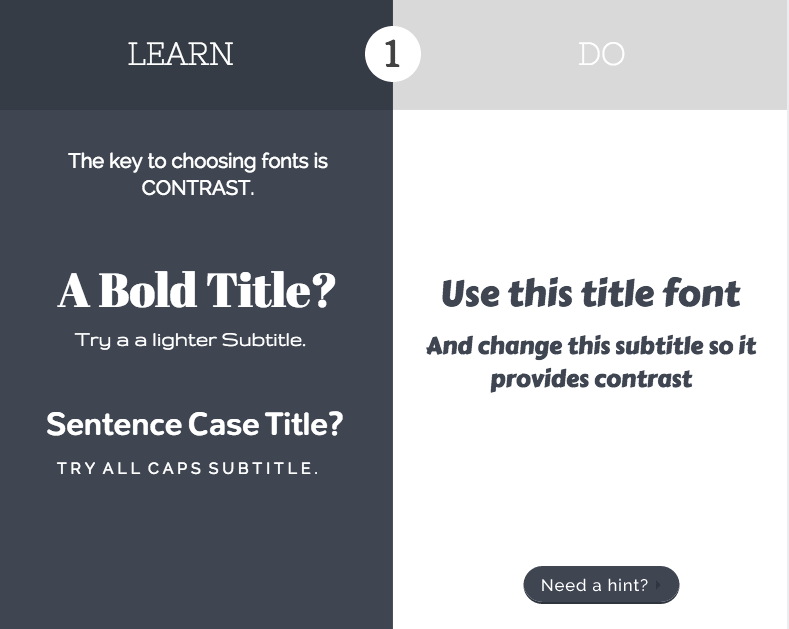
By being able to understand the market and research our niche, we were ready to start blogging.
Recap: Here’s what we did
So what was the main change we made to our overall strategy? In a word: research.
By studying our competitors and understanding the market we were able to stop writing about what we thought readers wanted and instead create content we knew there was a demand for.
We gained a clear understanding of all the content being produced in the design space. We took what we learned from our competitors and applied it to a different audience – our unique target audience: business owners, marketers, others professionals and non-designers in general.
Remember, just because you want to create something unique doesn’t mean there aren’t other blogs you can learn from. Study first, and then fill the market gap later.
Here are some of the major tweaks we made to our content strategy:
- Longer posts. One of our most popular blog posts is more than 5,000 words.
- Inspirational posts like “50 best business cards.” This received 4,200+ shares and hundreds of signups for Canva.
- Varied content types. We posted several different types of content—lists, feature articles, interviews, etc—and monitored their success. This helped us find out what our audience likes.
- Free resources. These type of posts are popular with both user engagement and new signups.
- Proactive list building. We started a design newsletter and became more proactive in building our email list. It’s only been about a month, but we’ve started seeing thousands of new users subscribe first to the blog, then to Canva.
And that’s it! Those are the strategic and tactical changes we made to grow our traffic 226.47% in 60 days. Here’s a closer look at traffic growth since Design School’s inception in November.

The insights we got after our research looked obvious, but they would have been impossible to uncover if we hadn’t gone through this process.
Intrigued? I’d love to hear any questions you may have. Share your blog growth insights and thoughts about this post in the comments.
Try Buffer for free
190,000+ creators, small businesses, and marketers use Buffer to grow their audiences every month.

